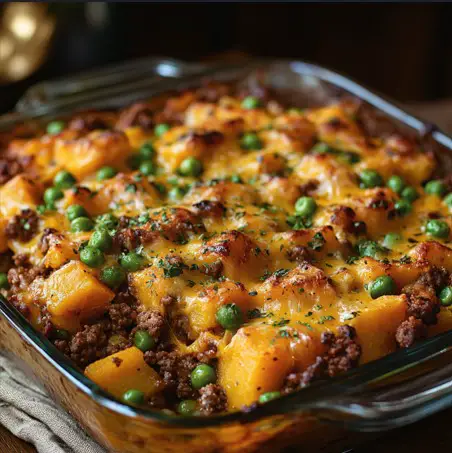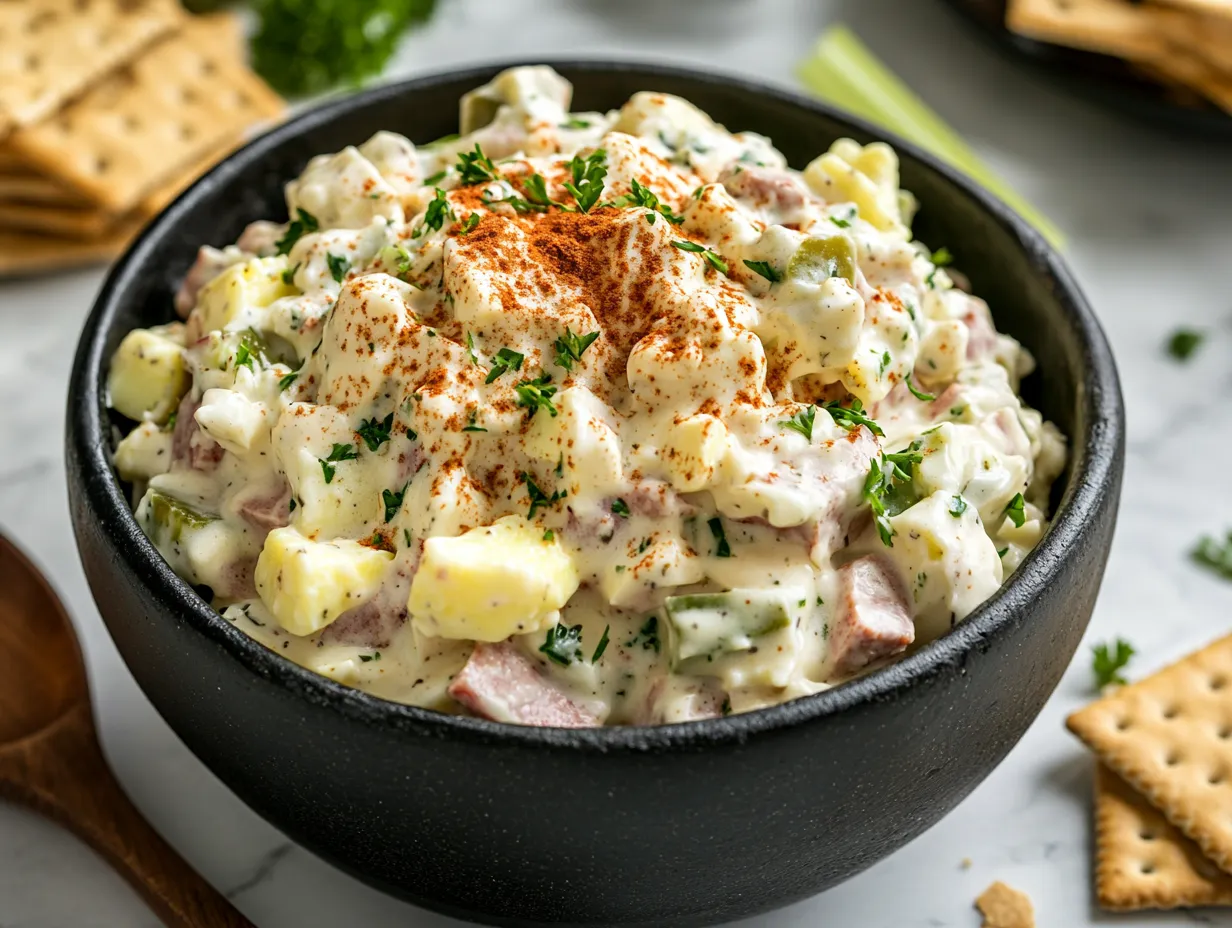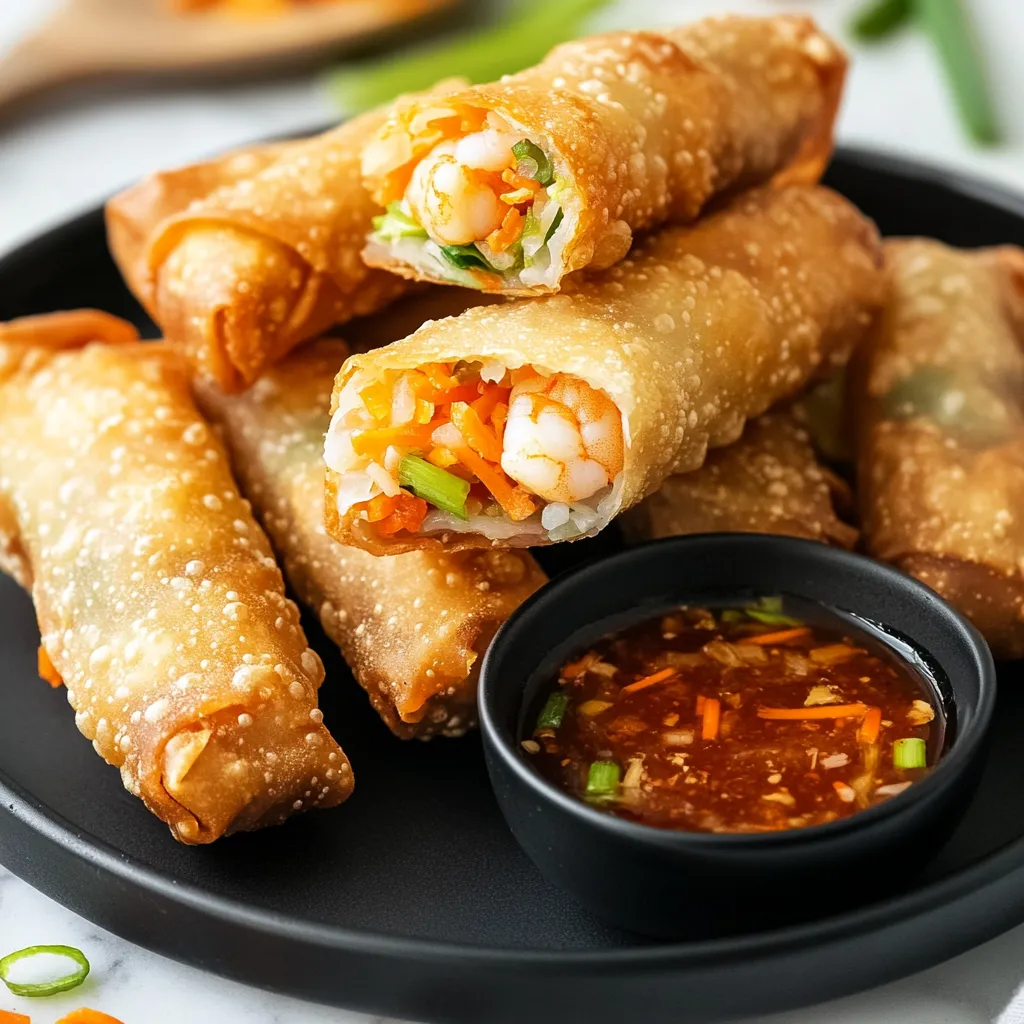Teriyaki Beef Casserole is a delightful fusion dish that combines the rich, savory flavors of traditional Asian cuisine with the comforting, hearty qualities of a classic casserole. This dish offers a perfect balance of taste and convenience, making it an ideal choice for busy weeknights or a satisfying family meal. The star ingredients—ground beef, teriyaki sauce, and rice—come together to create a dish that’s both flavorful and filling.
The ground beef provides a robust, meaty base that absorbs the sweet and tangy notes of the teriyaki sauce, creating a savory mixture that’s hard to resist. Teriyaki sauce, with its blend of soy sauce, sugar, ginger, and garlic, infuses the casserole with a deep umami flavor that’s complemented by the subtle sweetness. The rice serves as the perfect foundation, soaking up the delicious juices and adding a satisfying texture to every bite.
What makes this casserole particularly appealing is its versatility and ease of preparation. With just a few simple steps, you can have a complete meal ready in under an hour. It’s a dish that not only pleases the palate but also simplifies dinnertime, making it a favorite among home cooks and families alike.
Ingredients Breakdown
Ground Beef: The choice of ground beef is crucial for this casserole as it serves as the primary protein source, delivering both flavor and substance. A ground beef with 80-85% lean content strikes a balance between flavor and healthfulness, providing enough fat to keep the dish moist and flavorful without being overly greasy. For those looking to reduce fat intake, leaner beef, ground turkey, or chicken can be used as substitutes, offering a lighter but equally satisfying option. Additionally, plant-based meat alternatives, such as those made from soy or pea protein, can be used for a vegetarian version of this dish.
Onion and Garlic: These aromatics are essential in building the flavor foundation of the casserole. When sautéed, onions become sweet and add a depth of flavor that complements the savory meat, while garlic imparts a pungent, aromatic kick that enhances the overall taste. Together, they provide a fragrant base that elevates the dish from simple to savory and satisfying.
Teriyaki Sauce: Teriyaki sauce is a key ingredient that infuses the casserole with its signature sweet and savory taste. Made from soy sauce, sugar, ginger, and garlic, it adds a rich umami flavor that pairs beautifully with the beef. Store-bought teriyaki sauce is convenient, but for those who prefer homemade, it’s easy to whip up with a few pantry staples, allowing for customization of sweetness and spice levels.
Beef Broth: Adding beef broth to the casserole not only keeps the mixture moist but also intensifies the beefy flavor. The broth helps to blend all the ingredients together, ensuring that the rice and vegetables are infused with the savory goodness of the beef and teriyaki sauce. For a different flavor profile, chicken broth or vegetable broth can be used as substitutes.
Frozen Mixed Vegetables: Frozen mixed vegetables offer a quick and convenient way to add color, texture, and nutritional value to the casserole. They typically include a mix of peas, carrots, corn, and green beans, providing a variety of flavors and nutrients. Fresh vegetables can also be used, offering a more vibrant taste and texture, or other options like bell peppers, zucchini, or broccoli can be added to customize the dish.
Cooked White Rice: White rice is the traditional choice for this casserole, offering a neutral base that absorbs the flavors of the sauce and beef while adding a satisfying texture. However, for a more nutritious option, brown rice or quinoa can be used. These alternatives provide additional fiber and nutrients, making the dish healthier while still maintaining its hearty quality.
Shredded Cheddar Cheese: The addition of shredded cheddar cheese on top of the casserole provides a rich, creamy layer that melts to form a golden, bubbly crust. Cheddar’s sharp flavor contrasts nicely with the sweetness of the teriyaki sauce. For those looking to experiment, mozzarella or a cheese blend can be used for a milder or more complex flavor profile, and vegan cheese can be an option for a dairy-free version.
Salt and Pepper: Finally, salt and pepper are critical for enhancing the overall flavor of the dish. While the teriyaki sauce and broth contribute significant seasoning, a touch of salt and pepper ensures that the dish is perfectly balanced, bringing out the best in each ingredient. Adjusting these seasonings to taste is key to achieving the ideal flavor.
Step-by-Step Cooking Instructions
Preheating the Oven: Preheating the oven is a critical first step to ensure that your casserole cooks evenly. Set your oven to 350°F (175°C) and allow it to reach the correct temperature before placing the casserole inside. Preheating ensures that the dish starts cooking immediately, leading to even baking and preventing the casserole from becoming dry or undercooked. The consistent heat helps the cheese melt evenly and creates a bubbly, golden crust.
Cooking the Ground Beef: Begin by heating a large skillet over medium heat. Add the ground beef to the skillet, breaking it up with a wooden spoon or spatula as it cooks. Breaking up the meat into smaller pieces allows it to cook more evenly and ensures that no large chunks remain. Brown the beef thoroughly, stirring occasionally to avoid overcooking any one section. Cooking until the beef is no longer pink and has developed a slight crust adds depth of flavor to the dish. If there’s excess fat, drain it off carefully to keep the casserole from becoming greasy.
Adding Onions and Garlic: Once the beef is browned, add the chopped onion and minced garlic to the skillet. Stir them into the beef and cook until the onions become translucent and fragrant, typically 3-5 minutes. The key here is to keep the heat moderate to avoid burning the garlic, which can turn bitter. The onions should soften and sweeten, melding with the beef to create a rich, aromatic base for the casserole.
Incorporating Teriyaki Sauce and Beef Broth: After the onions and garlic are well-cooked, pour in the teriyaki sauce and beef broth. Stir the mixture thoroughly to ensure that the beef is evenly coated with the sauce. Bringing the mixture to a gentle simmer allows the flavors to meld together and thickens the sauce slightly. Simmering for about 5 minutes will reduce the liquid a bit, concentrating the flavors and ensuring that the casserole is not too watery.
Mixing in Frozen Vegetables: Add the frozen mixed vegetables directly to the skillet. Stir them into the beef mixture, ensuring they are evenly distributed. The heat from the skillet will quickly thaw the vegetables, integrating them into the dish. Stirring occasionally helps the vegetables warm through and absorb some of the flavors from the sauce. If you prefer using fresh vegetables, consider sautéing them slightly before adding to ensure they cook through properly.
Seasoning with Salt and Pepper: Taste the mixture after it has simmered to assess the seasoning. While the teriyaki sauce provides a good amount of flavor, a pinch of salt and pepper can balance the dish perfectly. Add seasoning incrementally, tasting as you go, to avoid over-salting.
Combining with Cooked Rice: In a large casserole dish, combine the cooked white rice with the beef and vegetable mixture. Stir gently to ensure even distribution without breaking up the rice grains. Over-stirring can lead to a mushy texture, so fold the mixture together until just combined.
Topping with Cheddar Cheese: Sprinkle the shredded cheddar cheese evenly over the top of the casserole. To ensure a uniform layer, spread the cheese from edge to edge, covering the entire surface. For those who enjoy a crispy top, consider adding a little extra cheese or even mixing in some breadcrumbs for added texture. This step is crucial for creating that irresistible golden crust.
Baking the Casserole: Place the casserole dish in the preheated oven and bake for 20-25 minutes. The goal is to heat the dish through and allow the cheese to melt completely, becoming bubbly and slightly browned. Keep an eye on the casserole towards the end of the baking time to prevent the cheese from burning. The edges should be lightly golden and the center hot and steaming.
Resting Before Serving: Once the casserole is done baking, remove it from the oven and let it sit for 5-10 minutes before serving. This resting period is crucial as it allows the casserole to set, making it easier to slice and serve. The flavors will also have a chance to meld further, resulting in a more cohesive and enjoyable dish. Skipping this step can result in a runny casserole that doesn’t hold its shape well when plated.
Serving Suggestions
Ideal Side Dishes: Teriyaki Beef Casserole is a hearty, flavorful dish that pairs well with lighter sides to balance the meal. A fresh green salad with a tangy vinaigrette is an excellent choice, adding a crisp contrast to the richness of the casserole. Alternatively, steamed or roasted vegetables, such as broccoli, asparagus, or green beans, can complement the dish without overpowering it. Garlic bread is another great option, offering a crunchy texture that pairs beautifully with the savory, cheesy topping of the casserole.
Beverage Pairings: When it comes to beverages, consider serving a light, crisp white wine such as Sauvignon Blanc or Pinot Grigio, which can cut through the richness of the casserole and enhance the flavors. For beer lovers, a mild lager or amber ale would complement the savory and slightly sweet notes of the teriyaki sauce. For non-alcoholic options, a refreshing iced tea or sparkling water with a splash of citrus can provide a pleasant contrast to the dish’s savory elements.
Garnishing Ideas: Garnishes can add both visual appeal and additional flavor to the casserole. Fresh herbs like chopped parsley, cilantro, or green onions can brighten the dish and add a pop of color. For those who enjoy extra heat, a drizzle of hot sauce or a sprinkle of crushed red pepper flakes can bring an exciting kick. Additional shredded cheese can also be added after baking for an extra layer of indulgence.
Variations and Substitutions
Protein Alternatives: While ground beef is the traditional choice for this casserole, there are several protein alternatives that can bring a different flavor and nutritional profile to the dish. Ground turkey or chicken are leaner options that provide a lighter taste, making the casserole slightly less rich but still satisfying. For a vegetarian version, crumbled tofu or tempeh can be used as substitutes. Tofu adds a soft, mild texture that absorbs the flavors of the teriyaki sauce well, while tempeh offers a firmer texture and a nutty flavor that can add depth to the dish.
Vegetable Variations: The versatility of this casserole extends to the vegetables as well. Fresh vegetables such as bell peppers, zucchini, or mushrooms can be used instead of or in addition to the frozen mixed vegetables, providing a fresher taste and more vibrant colors. Seasonal produce like asparagus in the spring or butternut squash in the fall can also be incorporated for a seasonal twist. For those following a low-carb diet, replacing starchy vegetables with options like cauliflower, spinach, or kale can reduce the carb content while adding nutritional value.
Rice Alternatives: While white rice is a classic base for this casserole, there are numerous alternatives that can cater to different dietary preferences. Brown rice offers a nuttier flavor and more fiber, making the dish heartier and more filling. Quinoa is another excellent choice, providing additional protein and a slightly crunchy texture. For a low-carb option, cauliflower rice can be used, which lightens the dish while still offering a similar texture. Orzo pasta can also be a fun twist, giving the casserole a unique texture that complements the other ingredients.
Cheese Options: Cheddar cheese is traditionally used for its sharp flavor and meltability, but there are many other cheeses that can bring different tastes and textures to the dish. Gouda or Swiss cheese offers a milder, creamier flavor, while Monterey Jack adds a subtle spice. For a bolder taste, try using blue cheese or a sharp Asiago. For those avoiding dairy, vegan cheese alternatives made from nuts or soy can also be used, providing a similar creamy texture and meltability.
Sauce Variations: Teriyaki sauce is the hallmark of this casserole, but experimenting with other sauces can create entirely new flavor profiles. Soy sauce can be used for a simpler, more traditional Asian flavor, while hoisin sauce adds a sweet and spicy element. For a completely different direction, BBQ sauce can be used, introducing a smoky, tangy flavor that pairs well with the ground beef and vegetables. These variations allow for endless customization, ensuring the casserole can be tailored to any taste preference.
Tips for Making Ahead and Storing Leftovers
Making Ahead: Preparing Teriyaki Beef Casserole in advance is a great way to save time and ensure a stress-free meal. To make the casserole ahead, follow the recipe up to the point of baking, then cover the assembled casserole tightly with plastic wrap or aluminum foil. It can be stored in the refrigerator for up to 24 hours before baking. When ready to bake, remove it from the fridge and allow it to come to room temperature for about 30 minutes before placing it in the preheated oven. This helps ensure even cooking. If you’re planning to freeze the casserole before baking, wrap it tightly in plastic wrap and then in foil to prevent freezer burn. It can be frozen for up to 3 months. When ready to bake, it can be baked straight from the freezer, though you’ll need to add an extra 20-30 minutes to the baking time.
Storing Leftovers: Leftover casserole should be cooled completely before storing. Once cooled, transfer portions to airtight containers or cover the entire casserole dish tightly with foil. Leftovers can be stored in the refrigerator for up to 4 days. When reheating, it’s best to use an oven set to 350°F (175°C) to retain the texture and prevent the casserole from becoming soggy. Microwave reheating is quicker but can lead to uneven heating and a loss of texture.
Freezing Tips: For freezing leftovers, portion the casserole into individual servings, which can be placed in airtight containers or freezer bags. This makes reheating more convenient and reduces waste. Label and date the containers before placing them in the freezer, where they can be stored for up to 3 months. To reheat from frozen, preheat your oven to 350°F (175°C), remove the casserole from the freezer, and bake covered with foil for 30-40 minutes, or until heated through. If reheating a single portion, a microwave can be used, but it’s best to do so on a lower power setting to ensure even heating.
Nutritional Information and Health Considerations
Caloric Breakdown: Teriyaki Beef Casserole is a hearty dish that offers a satisfying blend of flavors and textures. On average, a serving size of this casserole (about 1/6th of the dish) contains approximately 400-500 calories, depending on the specific ingredients and portion sizes used. The calorie content can vary based on the fat content of the ground beef, the type of rice, and the amount of cheese added.
Macronutrients: Each serving of the casserole provides a well-rounded balance of macronutrients. It typically contains around 20-25 grams of protein, primarily from the ground beef and cheese, which is essential for muscle repair and growth. The dish also offers approximately 30-40 grams of carbohydrates, primarily from the rice and vegetables, providing energy to fuel your day. Fat content is around 15-20 grams per serving, with the exact amount depending on the fat percentage of the beef and the quantity of cheese used.
Dietary Adjustments: To make the casserole gluten-free, ensure that the teriyaki sauce and beef broth used are certified gluten-free. For a lower-carb version, substitute white rice with cauliflower rice or reduce the portion of rice and increase the vegetables. To make the dish dairy-free, replace the cheddar cheese with a dairy-free alternative, such as almond or cashew-based cheese, and check that the teriyaki sauce doesn’t contain any hidden dairy ingredients.
Portion Control: Given the calorie and macronutrient density of the casserole, it’s important to consider portion sizes to maintain a balanced diet. A serving size of about 1/6th of the casserole is generally appropriate, especially when paired with lighter side dishes like a salad or steamed vegetables. This approach ensures a satisfying meal that fits within daily nutritional goals without overindulging.
Frequently Asked Questions (FAQs)
Can I use fresh vegetables instead of frozen?
Yes, you can absolutely use fresh vegetables in place of frozen ones in this casserole. Fresh vegetables like bell peppers, zucchini, mushrooms, or broccoli can add a vibrant taste and texture to the dish. If using fresh vegetables, it’s best to sauté them lightly before adding them to the casserole to ensure they are tender after baking. This step helps to maintain their flavor and texture without becoming too soft or mushy.
How can I make this casserole gluten-free?
To make the Teriyaki Beef Casserole gluten-free, be sure to use gluten-free teriyaki sauce and beef broth, as these ingredients can sometimes contain wheat-based additives. You can find gluten-free versions of these products at most grocery stores. Additionally, double-check any pre-packaged ingredients, like rice mixes or frozen vegetables, to ensure they are also gluten-free. With these adjustments, the casserole will be safe for those with gluten sensitivities or celiac disease.
What’s the best way to reheat leftovers?
The best way to reheat leftovers is in the oven, which helps retain the casserole’s texture and flavor. Preheat your oven to 350°F (175°C), cover the casserole dish with aluminum foil to prevent the top from drying out, and heat for 20-25 minutes or until warmed through. If you’re in a hurry, you can use a microwave, but do so on a medium power setting and stir halfway through to ensure even heating. To maintain the best texture, avoid microwaving for too long, as this can make the casserole soggy.
Can I add more spice to this dish?
Yes, adding more spice is a great way to customize the flavor to your liking. You can mix in some crushed red pepper flakes, a dash of hot sauce, or a sprinkle of cayenne pepper into the beef mixture while cooking. Additionally, you can top the finished casserole with a drizzle of Sriracha or another favorite hot sauce before serving. Spicy lovers can also consider incorporating jalapeños or spicy teriyaki sauce for an extra kick.
Is it possible to prepare this casserole in a slow cooker?
Yes, you can adapt this casserole for a slow cooker. To do so, first brown the ground beef, onions, and garlic in a skillet as directed. Then, transfer the cooked mixture to the slow cooker and add the teriyaki sauce, beef broth, and frozen vegetables. Cook on low for 4-6 hours or on high for 2-3 hours. About 30 minutes before serving, stir in the cooked rice and sprinkle the cheese on top. Cover and continue to cook until the cheese is melted and bubbly. This method allows for a hands-off approach, making it even more convenient.
Print
Teriyaki Beef Casserole
Description
This Teriyaki Beef Casserole is a flavorful and satisfying dish that combines the savory taste of ground beef with the sweet and tangy notes of teriyaki sauce. Mixed with hearty white rice, colorful vegetables, and topped with melted cheddar cheese, this casserole is a delightful fusion of Asian and American comfort foods. Perfect for busy weeknights, it’s easy to prepare and versatile enough to suit various dietary needs. Whether you’re feeding a family or meal-prepping for the week, this casserole is sure to become a household favorite.
Ingredients
- 1 1/2 pounds of ground beef
- 1/2 cup of chopped onion
- 2 cloves garlic, minced
- 1/2 cup of teriyaki sauce
- 3/4 cup of beef broth
- 1 cup of frozen mixed vegetables
- 2 cups of cooked white rice
- 1 cup of shredded cheddar cheese
- Salt and pepper to taste
Instructions
Notes
Feel free to customize this casserole to your taste. You can swap out the ground beef for turkey, chicken, or a plant-based alternative to accommodate different dietary preferences. If you prefer using fresh vegetables, sauté them briefly before adding them to the casserole for the best texture. To make the dish gluten-free, ensure that all your sauces and broths are certified gluten-free. This casserole also freezes well, so consider doubling the recipe and saving half for a quick and easy meal later on. Enjoy this dish with your favorite sides, and don’t hesitate to add a bit of spice if you like a kick in your meals!









